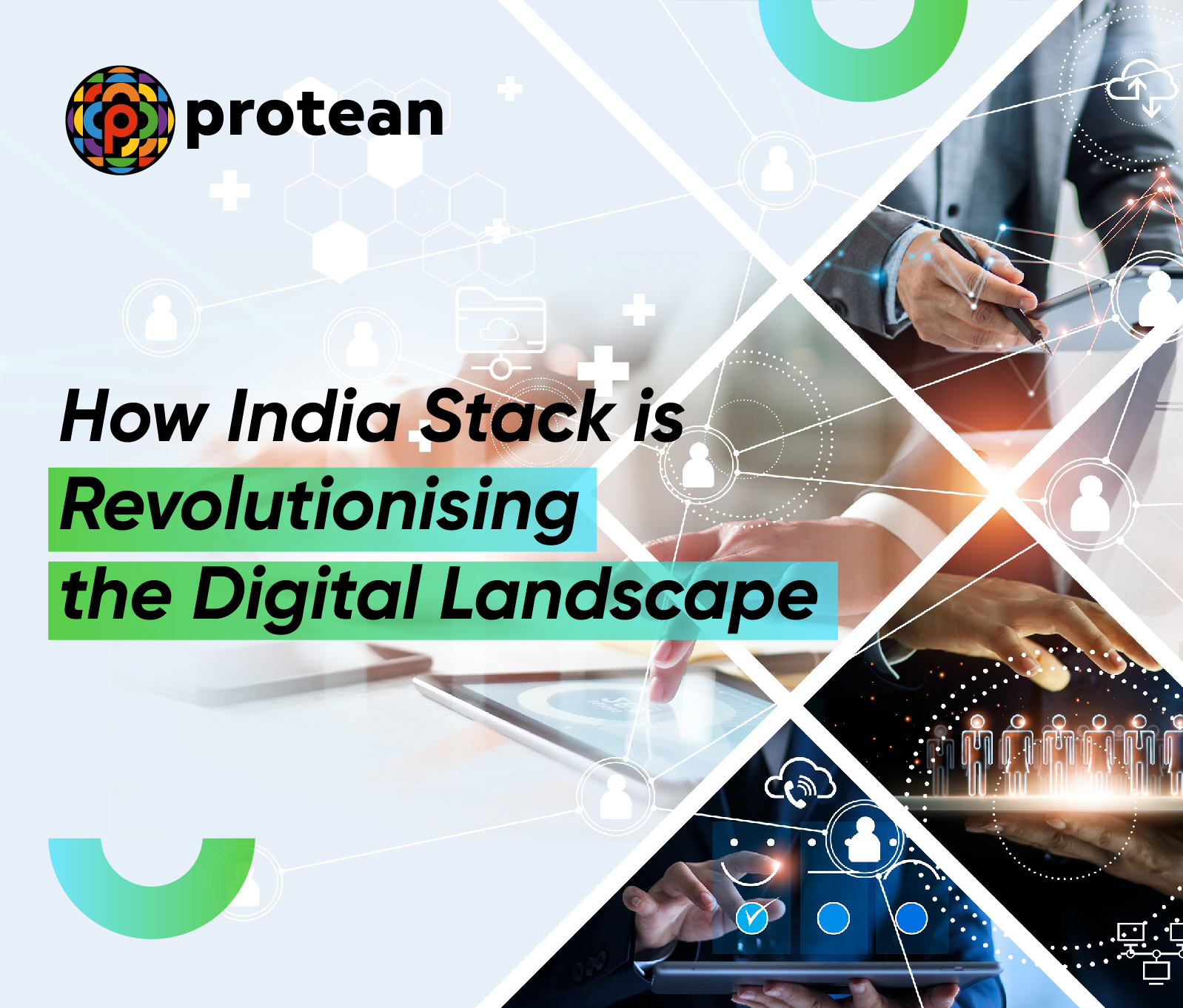Do you remember those times when we used to pay some paisa in the corner store for some candies? We have also heard of some people paying in cash for big purchases.
Fast-forward to several years later: the need for small change has completely disappeared in 2020. In 2024, every Indian with a smartphone can take part in the digital economy.
Small entrepreneurs like milk, water, and food vendors have been able to quickly adapt their small businesses to accept digital payment for doorstep delivery. It has helped to drive financial inclusion in the country. These examples of our daily lives showcase a major transformation in how we handle our transactions. This transformation owes its existence to the revolutionary innovation known as India Stack- a comprehensive digital identity.
What Exactly is India Stack?
India Stack is a compilation of open Application Programming Interfaces (APIs) and digital public goods. Its purpose is to push identity, payment and data to a huge scale. Starting in India, it is spreading worldwide, aiming for financial inclusivity while becoming digital-friendly.
Governments, businesses, start-ups and developers can leverage this effort to build sustainability through digital solutions. The platform creates a unique digital foundation to address India's challenges for presence-less, paperless, and cashless delivery of services in the areas of education, healthcare, and finance.
India Stack ensures financial inclusion, streamlining identity verification with Aadhaar, diminished paperwork with eKYC, and proffered secure digital document storage with Digital Locker. UPI, an integral part of India Stack, has reimagined payments and rendered them swift and hassle-free.
What are the Key Components of India Stack?
In India Stack, the various parts of this system combine to make for a revolutionarily digital plumbing that’s changing how Indians interact with technology & services in their daily lives today.
- e-KYC (Know Your Customer): Aadhaar is used for instant customer verification, providing essential details such as residential address and birthdate to organisations. Over 950 million people have made transactions for e-KYC via Protean.
- Unique Identification Number: The UIDAI is the core of the India Stack or Aadhaar Stack. This is the Unique Identification Number that is linked to the individual’s biometric readings.
- AEPS (Aadhaar Enabled Payments Systems): It was developed by the National Payment Corporation of India (NPCI, an umbrella organisation for all retail payment systems in India), primarily focused on financial inclusion by allowing cashless transactions and facilitating government entitlement payouts and bank-to-bank transfers.
- UPI (Unified Payment Interface): UPI allows users to initiate and receive digital payments, allowing for more smooth digital trade and transactions.
- eSign: With API-based functionalities, the holders of Aadhaar can do e-signature on already verified documents via biometric or OTP. – No more paperwork than necessary; it is legally binding.
- DigiLocker: DigiLocker is available as an online record keeper for the Indian government, wherein one can easily connect his or her stored Aadhaar card details to sign and securely transfer documents via any means.
- Digital Signature: Digital signatures, as part of the paperless layer of India stack, allow one to digitally sign contracts, which lets individuals electronically sign contracts and eliminates the need for physical documents and ink.
What is the Role of India Stack in Creating Digital India?
The significance of India Stack in creating Digital India cannot be overstated. One can guess the impact of it from these numbers: ₹14.05 trillion in monthly mobile payments and 67 billion digital identity verifications. But these mere numbers cannot fully state the significance of India Stack. It has ushered in a digital revolution that has touched every aspect of Indian society, from government services to small businesses and individuals.
At the core of this transformation is the Aadhaar-enabled payment system, which has played a pivotal role in simplifying the country's payment infrastructure. It has also made digital transactions accessible to the masses.
People’s Daily Lives Have Become Easier
Before the emergence of Aadhaar-based payments, building secure mobile payments and peer-to-peer payment ecosystems was tough, as validating a person's identity had never been simplified in a digital space.
This all changed with the arrival of the Aadhaar-enabled payment system. Today, people can verify themselves using biometrics such as fingerprints or iris scans via their smartphones. It simplifies the authentication process dramatically and makes security much more robust.
Eases the Verification Process
Government agencies did not take long to use the advantages of Aadhaar for its programmes. Aadhaar-based authentication has helped flush out thousands of dummy subscriptions. By automating subsidiary schemes, the government saves billions of dollars.
This simplifies the system, which increases efficiency and also saves money for taxpayers. In this matter, Protean has been and is a reliable platform for facilitating Aadhaar authentication for the residents of India.
The distribution mechanism for crop subsidies for Indian farmers can be considered as an instance. As with other applications of Aadhaar, farmers did not have to spend much precious time waiting in long lines at the government office to collect their monthly farm subsidy.
Through UPI, the Government can verify their identity for themselves & credit the money in their respective accounts that hold an Aadhaar-linked UPI for a Direct Benefit Transfer.
Businesses are Reaching More Customers, More Efficiently
The impact of India Stack extends far beyond government programs. It provides new commercial possibilities for companies to challenge conventional business models. By leveraging the existing infrastructure, businesses can reach consumer segments that were previously beyond their reach. Also, this reduces the cost of customer acquisition with their lifetime value, and it is feasible for companies to be profitable by serving their most remote users.
Even the Smallest of Shops Started Accepting Online Payments
One of the most amazing things enabled by the India Stack is enabling street vendors to be a part of the digital economy. Before, some of those vendors did not even have a bank account. Now, they conduct all their transactions digitally, leveraging the data generated to access credit, expand their businesses, and invest their savings profitably. Not only have countless more lives been enriched by this change, but it has also fuelled growth in the informal economy.
The India Stack has effectively created a digital gateway to the entire financial world. Its impact on the micro, small, and medium-sized enterprises (MSME) sector, which is integral to India's economy, cannot be overstated. India's digital transformation, driven by initiatives like Aadhaar, e-KYC, and UPI, has the potential to turbocharge the growth of the MSME sector. With Protean, e-KYC, online PAN verification, e-Sign and Aadhaar authentication have become more hassle-free than ever.
Digital transformation is also well-supported by the offerings of Protean. Protean is using its network of TIN-Facilitation centres to offer key services, which include PAN and TAN applications, TDS/TCS returns, etc. These services streamline tax procedures and increase efficiency for companies and citizens. This ultimately contributes to digitising the Indian platform.
Takeaway
Overall, India Stack serves as the accelerator to create Digital India. It has revolutionised payments, government services, and business models, bringing millions of individuals and small businesses into the formal digital economy. As more innovation hits the ground and more people come online through digital inclusion, you can be sure about one thing—India Stack will continue reshaping India’s economy going forward with inclusion for everyone.
FAQs
1. What is the role of Aadhaar in the India Stack, and how does it impact business operations?
Aadhaar plays an important part in the India Stack framework. Its varied capabilities have profoundly changed the way the government approaches identity verification, authentication services, and financial inclusion. This, in turn, has had a significant impact on corporate operations in a variety of industries.
2. When was India Stack founded?
The initial phase in the stack's development occurred in 2010, with the establishment of a biometric digital ID system known as Aadhaar. The government launched a push to encourage people to get their photos, fingerprints, and other biometric information taken at enrolment centres across the country.
3. What nations use India Stack?
Since June 2023, India has already signed MoUs with countries including Armenia, Sierra Leone, Suriname, and Antigua and Barbuda to share India Stack. At the same time, there are many other nations such, as Mauritius and Saudi Arabia, which also have expressed interest and are nearing completion of India Stack collaboration.
4. What is e-KYC, and how can it help businesses with customer onboarding?
e-KYC is a streamlined technique for digitally verifying individuals' identities. This technology-driven strategy reduces the conventional reliance on physical documentation. It allows organisations to complete customer onboarding more quickly and efficiently. Essentially, e-KYC allows users to have their identities verified without the burden of paper documentation.
5. How has India Stack impacted small enterprises in India, such as street vendors?
India Stack has transformed the way small businesses operate, particularly street vendors. These vendors, who were previously barred from the official economy, may now perform digital transactions. They can also obtain loans, expand their operations, and profitably invest their savings. India Stack has played an important role in integrating people into the digital economy.
- Story by Kakoli Laha

